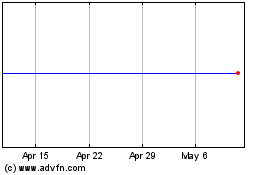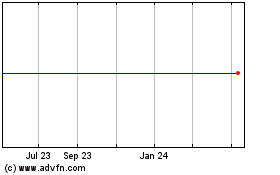2nd UPDATE: Lawmakers Cite Warning Signs Before Rig Explosion
May 12 2010 - 3:15PM
Dow Jones News
A deepwater BP Plc (BP, BP.LN) oil well had failed gas-leak
tests hours before a surge of gas sent an oil rig into flames, but
company officials reviewing the data concluded that additional
tests justified proceeding with operations, according to a lawmaker
leading a probe into the Gulf of Mexico disaster.
The new details emerged at a U.S. House Energy and Commerce
Committee hearing as BP scrambled to contain a mile-deep leak that
followed the explosion on the oil rig that BP was leasing from
Transocean Ltd. (RIG). BP had contracted Halliburton Co. (HAL) to
cement a pipe into a well bored into the Gulf of Mexico sea floor,
and was using a safety device made by Cameron International Corp.
(CAM).
On top of the pressure-test warning signs, a safety device,
known as a blowout preventer, "had been modified in unexpected
ways," including one change that was "potentially significant,"
according to another lawmaker, Rep. Bart Stupak (D, Mich.). BP has
been unable to activate the blowout preventer and is instead
drilling relief wells to shut off the oil leak, a process that the
company says will take three months.
"The more I learn about this accident, the more concerned I
become," said Rep. Henry Waxman (D, Calif.), the chairman of the
committee, which has collected 100,000 pages of documents. "This
catastrophe appears to have been caused by a calamitous series of
equipment and operational failures."
On the irregular pressure tests, "negative" pressure tests,
which involve reducing pressure inside the well to check for gas
leaks, were conducted after the cement had time to set, according
to Waxman. Waxman said his information was based in part on an
interview with a BP official.
Initial tests failed, suggesting that an influx of gas might be
causing pressure to mount inside a well hole bored into the sea
floor, Waxman said. Transocean and BP personnel engaged in "an
internal debate" over how to proceed, and at 8 p.m. officials
determined that additional results justified ending the test and
proceeding with well operations, according to Waxman.
Shortly before 10 p.m., operations resumed and gas "surged from
the well" up a pipeline and "the rig exploded in a fireball,"
Waxman said.
Republicans, longtime allies of the oil industry, began to waver
in their support for offshore drilling. After being told that
blowout preventers aren't designed for all disaster situations,
Rep. Joe Barton (R, Texas) said that "I would think that your
blowout preventer, your technology, your casing, should be designed
to handle" a catastrophic release of pressure.
"If my assumption is wrong, then we have to reassess the entire
OCS drilling program," Barton said. The Gulf of Mexico, a part of
the nation's Outer Continental Shelf, accounts for 30% of U.S.
domestic oil production.
Company executives, who had spent Tuesday dodging blame at U.S.
Senate hearings, found new reasons to point fingers on
Wednesday.
Halliburton's chief safety officer, Tim Probert, repeated
assertions that the only way to fully test the quality of
Halliburton's cement work would have been to conduct a final
evaluation involving a "cement bonding log," which wasn't done.
But Lamar McKay, the head of BP Plc's U.S. unit, said that such
tests are only used "when there is an indication of a problem" and
said that the "better way" to test cementing work is through
positive and negative pressure tests.
-By Siobhan Hughes, Dow Jones Newswires; 202-862-6654;
siobhan.hughes@dowjones.com
Cooper Cameron (NYSE:CAM)
Historical Stock Chart
From Jun 2024 to Jul 2024

Cooper Cameron (NYSE:CAM)
Historical Stock Chart
From Jul 2023 to Jul 2024
